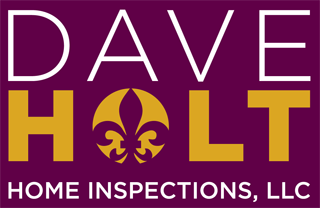Mold is one of the most common problems homeowners face. It is unsightly, causing staining and property damage, and harmful to your health. While there are many different types of mold, there are a few common telltale signs of mold that homeowners should be aware of. Here are a few indications of mold growth in your home.
Signs of Mold in Your Home
1. A Musty Odor
One of the most common signs of mold is a musty odor. If you notice a strong, unpleasant smell in certain areas of your home, it could indicate that mold is growing. Mold thrives in humid environments, so it’s no surprise that the odor is usually most noticeable in damp spaces like basements and bathrooms. If you detect a musty smell, especially in an area that contains moisture, investigate further to determine if mold is the culprit.
2. Visible Mold Growth
The most obvious sign of mold is visible growth. Mold can appear in different colors but most often shows as a green, black, or white substance on surfaces. You may see it on walls, ceilings, floors, or furniture. If you notice mold, the spores may have already spread. Remove visible growth immediately and take steps to prevent it from returning.
3. Health Issues Can be Signs of Mold in Your Home
Mold exposure can cause health concerns, including allergic reactions, respiratory problems, headaches, and long-term neurological issues. If you or someone in your household is experiencing unexplained health issues, it could be a sign of mold exposure. Pay attention to symptoms that arise in damp areas of your home or after spending time in a specific room. If the symptoms lessen upon leaving the house, an allergen – like mold – in the living spaces may be to blame.
4. Water Damage
If your home has experienced water damage, act fast to prevent mold growth. Even small leaks or spills create an environment for mold to thrive. If you notice water stains on walls or ceilings, or if there has been flooding or plumbing issues, inspect the area for mold. Water damage provides a breeding ground for mold, and immediately treating the problem is essential to prevent further damage.
Mold is a serious problem that requires attention and action. If left untreated, it may cause damage to your property, lower the indoor air quality, and pose risks to your family’s health. Be aware of the common indications of mold in your home. If you notice these warning signs, take steps to minimize the damage and address the cause of the issue. By being proactive, you’ll protect your home and your family from the risks associated with mold exposure.
FAQs
How frequently should a professional inspect my home for mold issues?
Regular inspections, at least annually, can identify mold issues early on, even with no visible signs. This proactive approach is essential for maintaining a healthy indoor environment.
Are there DIY methods to prevent mold growth, or is professional assistance always necessary?
While regular cleaning and maintenance will help remove spores and reduce mold growth, if you notice large mold patches or a persistent moldy smell, call a professional.
Are all visible molds the same, or can they appear in different colors?
Mold can appear in various colors, including green, black, or white. Identifying mold’s color can sometimes provide insights into the type of mold present, but the only way to know is through testing. All mold should be promptly addressed and removed.
Is there a connection between mold growth and seasonal changes, particularly during colder months?
Seasonal changes can impact mold growth. During spring and summer, increased humidity creates an environment for mold to thrive. Homes tend to be sealed tightly in fall and winter to conserve heat, trapping moisture indoors.
Are certain home decor items more prone to mold, and how can I prevent it?
Some items, like carpets and curtains, can be more prone to mold growth, especially if they trap moisture. Regularly cleaning and improving airflow in the living spaces will help prevent mold issues.
Dave Holt Home Inspections provides professional inspection services to customers in New Orleans and the surrounding areas. Contact us to schedule an appointment.

